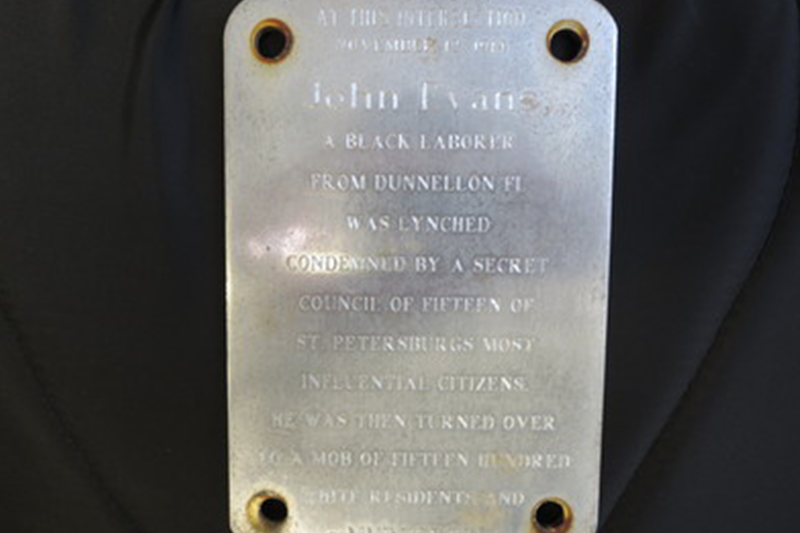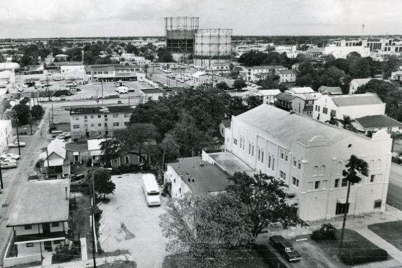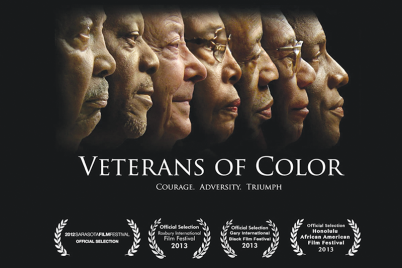John Evans was brutally lynched and shot on Nov. 12, 1914, by a mob of 1,500 white men, women and children. Photo courtesy of the City of St. Pete.
By Gwendolyn Reese
John Evans was lynched at Ninth Street (now Dr. Martin Luther King Street) and Second Avenue South on Tuesday, November 12, 1914, by a mob of 1,500 white men, women and children. In the book “St. Petersburg’s Historic African American Neighborhoods” by Rosalie Peck and Jon Wilson, the following is written regarding the lynching:
“Townspeople and nightriders from the countryside lynch John Evans, an African American suspected of murdering white photographer Ed Sherman. The murdered white man’s lawyer told his hometown of Camden, N.J., newspaper that city leaders met in secret to plan the lynching.”
 Several books by local authors include no reference to the lynching.
Several books by local authors include no reference to the lynching.
Wikipedia states that 55-year-old Evans was a photographer and real estate developer. He was murdered and his wife, Mary, was attacked. Her claim of being attacked by “Two negroes” led to the arrest of Evans.
Two days after the murder, some of the city’s most prominent and well-respected members, including some public officials, decided to take matters into their own hands. These vigilantes stormed the jail and marched Evans to the site where he was hanged without being given a fair trial.
He wrapped his legs around the light post in an effort to keep himself alive at which time an unidentified white woman shot and killed him. The shot was fatal, but it did not prevent others at the scene from riddling his body with bullets until they were depleted of ammunition.
Evans was one of 11 black men working for Sherman. He was fired a few days before the attack. Mrs. Sherman was beaten with a pipe by a second man, Ebenezer Tobin, who was arrested and jailed in Clearwater. A year later, Tobin was put on trial for murder, convicted and executed in Oct. 1915. His execution was Pinellas County’s first legal hanging.
Mrs. Sherman never said she was raped, but newspaper articles implied she was and played up the sexual theme possibly fueling the community’s outrage. The headlines in the St. Petersburg Daily Times and the St. Petersburg Evening Independent highly sensationalized the matter and neither paper denounced the lynching or offered an apology to the black community.
Evans is said to have come from Dunnellon only a few weeks before, and an editorial from the Ocala Star, the local paper for that area stated: “It was probably safe to lynch [Evans] on general principles whether he was guilty of the crime he was accused of or not.”
The violence did not end with the Nov. 14 lynching. Vigilantes continued to look for his accomplice, and anyone thought to be a sympathizer. There was talk of burning down the entire black community and many blacks fled.
An article in the Tampa Morning Tribune on Nov. 14, 1914, stated: “Every available outlet from this city was utilized by negroes [sic] in their frantic determination to get out of town. The steamer Favorite left the docks for Tampa with 173 negroes [sic], mostly women and children, aboard and the Tampa & Gulf Coast trains were carrying capacity loads when they left the depot. The various roads leading to the outlying country were studded from the first break of day until long after supper with blacks staggering, under heavy bundles and disappearing in the distance. Tonight there is not a negro [sic] to be seen on the streets.”
In the effort to find Evans’ accomplice, the crowd roamed the black community firing shots and raiding homes. Four men were arrested and taken to jail. They were kept there until Mrs. Sherman could have a look at them.
The temper of the crowd was unmistakable. Earlier in the day, carloads of armed men drove to Clearwater for Tobin who was being held in the Clearwater jail. The men returned empty handed. Deputy Sheriffs are said to have “guarded every road into Clearwater after hearing rumors that several hundred people from St. Petersburg were on their way there planning to burn the jail and lynch all negro [sic] prisoners.”
There seemed to be no doubt in the minds of the white community that the right man had been lynched; however, both men insisted upon their innocence until their death. There was not a hint that any steps would be taken to identify or punish the members of the lynch mob. A local coroner’s jury determined that Evans died at the hands of “unknown” persons.
The events drew critical press from outside newspapers. In “Days of Fear: A Lynching in St Petersburg” by Jon Wilson, he wrote in 1983: “in its November 15 editorial, the Tampa Tribune observed: ‘St. Petersburg and its neighborhoods could have won a national reputation by permitting the law to take its course in this aggravated case—or at least by waiting until guilt could be accurately fixed before adopting the mob method.’”
The Clearwater Sun commented caustically, ‘Surely there must have been those in that city of ten thousand people, with its cultural refinement, and its law and its gospel, who could have prevented the frenzy of a small portion of its people from adding crime to crime.’”
A 3×5 inch aluminum plaque marking the scene of the lynching was found by city employees several years ago. The origin of the plaque is unknown. The St. Petersburg Museum of History has a photo of the 1914 lynching.
In April, I attended the grand opening of the Legacy Museum: From Enslavement to Mass Incarceration and the National Memorial for Peace and Justice in Montgomery, Ala. The museum and the memorial will force America to confront its legacy of slavery, terrorism, lynching and segregation.
The memorial includes 800 six-foot monuments symbolizing the thousands of lynching victims. There is a monument for each county where a lynching occurred. The names of the lynching victims are engraved beneath the name of the county.
The Equal Justice Initiative is inviting counties to claim their monument, bring them home, install them in public places and engage the community in conversations about the legacy of racial terrorism. Senator Darryl Rouson is heading a coalition of community organizations to bring Pinellas County’s monument home. For more information call (727) 537-0449.
Resources include:
Wikipedia
Rosalie Peck & Jon Wilson, St. Petersburg’s Historic African American Neighborhoods, (Charleston, SC: The History Press, 2008)
Tampa Morning Tribune, November 14, 1918
Clearwater Sun quoted in the Tampa Tribune November 17, 114
Jon L. Wilson, Days of Fear: A Lynching in St Petersburg (University of South Florida Scholar Commons, Tampa Bay History 05/02, 1-1-1983)
Equal Justice Initiative, Lynching in America: Confronting the Legacy of Racial Terror (2017)









